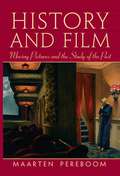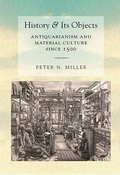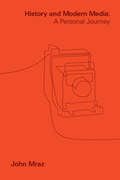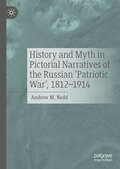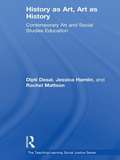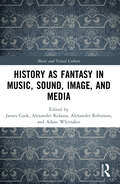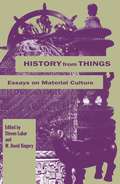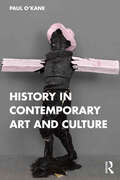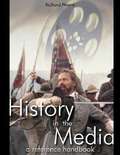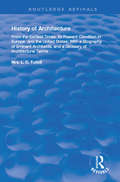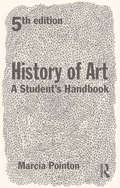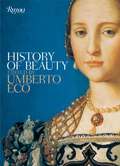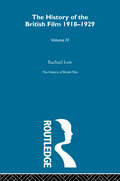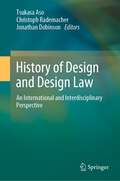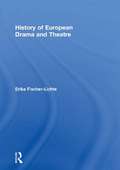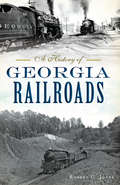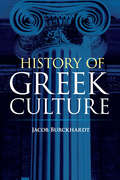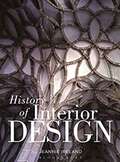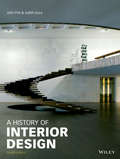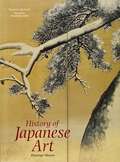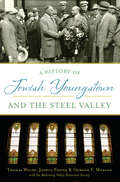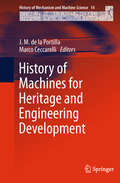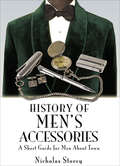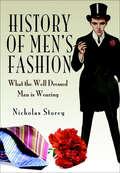- Table View
- List View
History and Film: Moving Pictures and the Study of the Past
by Maarten PereboomThe ability to view recorded moving pictures has had a major impact on human culture since the development of the necessary technologies over a century ago. For most of this time people have gone to the movies to be entertained and perhaps edified, but in the meantime television, the videocassette recorder (VCR), the digital versatile disk (DVD) player, the personal computer (desktop and laptop), the internet and other technologies have made watching moving pictures possible at home, in the classroom and just about anywhere else. Today, moving images are everywhere in our culture. Every day, moving picture cameras record millions of hours of activity, human and otherwise, all over the world: your cell phone makes a little video of your friends at a party; the surveillance camera at the bank keeps on eye on customers; journalists’ shoulder-carried cameras record the latest from the war zone; and across the world film artists work on all kinds of movies, from low-budget independent projects to the next big-budget Hollywood blockbuster. Moving pictures have had a great influence on human culture, and this book focuses on using moving images as historical evidence. Studying history means examining evidence from the past to understand, interpret and present what has happened in different times and places. We talk and write about what we have learned, hoping to establish credibility both for what we have determined to be the facts and for whatever meaning or significance we may attach to our reconstruction of the past. Studying history is a scientific process, involving a fairly set methodology. We tend to favor written sources, and we have tended to favor writing as a means of presenting our views of the past. But historians also use all kinds of other documents and artifacts in their work of interpreting the past, including moving pictures.
History and Its Objects: Antiquarianism and Material Culture since 1500
by Peter N. MillerCultural history is increasingly informed by the history of material culture—the ways in which individuals or entire societies create and relate to objects both mundane and extraordinary—rather than on textual evidence alone. Books such as The Hare with Amber Eyes and A History of the World in 100 Objects indicate the growing popularity of this way of understanding the past. In History and Its Objects, Peter N. Miller uncovers the forgotten origins of our fascination with exploring the past through its artifacts by highlighting the role of antiquarianism—a pursuit ignored and derided by modem academic history—in grasping the significance of material culture.From the efforts of Renaissance antiquarians, who reconstructed life in the ancient world from coins, inscriptions, seals, and other detritus, to amateur historians in the nineteenth century working within burgeoning national traditions, Miller connects collecting—whether by individuals or institutions—to the professionalization of the historical profession, one which came to regard its progenitors with skepticism and disdain. The struggle to articulate the value of objects as historical evidence, then, lies at the heart both of academic history-writing and of the popular engagement with things. Ultimately, this book demonstrates that our current preoccupation with objects is far from novel and reflects a human need to reexperience the past as a physical presence.
History and Modern Media: A Personal Journey (Critical Mexican Studies)
by John MrazIn History and Modern Media, John Mraz largely focuses on Mexican photography and his innovative methodology that examines historical photographs by employing the concepts of genre and functions. He developed this method in extensive work on photojournalism; it is tested here through examining two genres: Indianist imagery as an expression of imperial, neo-colonizing, and decolonizing photography, and progressive photography as embodied in worker and laborist imagery, as well as feminist and decolonizing visuality. The book interweaves an autobiographical narrative with concrete research. Mraz describes the resistance he encountered in US academia to this new way of showing and describing the past in films and photographs, as well as some illuminating experiences as a visiting professor at several US universities. More importantly, he reflects on what it has meant to move to Mexico and become a Mexican. Mexico is home to a thriving school of photohistorians perhaps unequaled in the world. Some were trained in art history, and a few continue to pursue that discipline. However, the great majority work from the discipline known as "photohistory" which focuses on vernacular photographs made outside of artistic intentions. A central premise of the book is that knowing the cultures of the past and of the other is crucial in societies dominated by short-term and parochial thinking, and that today's hyper-audiovisuality requires historians to use modern media to offer their knowledge as alternatives to the "perpetual present" in which we live.
History and Myth in Pictorial Narratives of the Russian 'Patriotic War', 1812-1914
by Andrew M. NeddThis book reveals that the visual narrative of the events of the Russian campaign of 1812 was inextricably linked to Russia's search for national identity and helped to form competing definitions of 'Russianness'. No pre-revolutionary military event was more celebrated in Russian literature and art than the ‘Patriotic War of 1812’, during which Napoleon advanced his Grand Armée into Russia, only to retreat months later in defeat as his army faced starvation and capture during the brutal winter. The works of art that retold the story of 1812 extolled virtues that were represented as inherently Russian: courage, resourcefulness, and unity. Furthermore, these values were increasingly contrasted with those of the foreign invader from the west. While the emphasis is largely on academic painting, this book also explores popular media and memorialization in order to reveal the role that images played in the process of constructing identities in nineteenth-century Russia.
History as Art, Art as History: Contemporary Art and Social Studies Education
by Rachel Mattson Dipti Desai Jessica HamlinHistory as Art, Art as History pioneers methods for using contemporary works of art in the social studies and art classroom to enhance an understanding of visual culture and history. The fully-illustrated interdisciplinary teaching toolkit provides an invaluable pedagogical resource—complete with theoretical background and practical suggestions for teaching U.S. history topics through close readings of both primary sources and provocative works of contemporary art. History as Art, Art as History is an experientially grounded, practically minded pedagogical investigation meant to push teachers and students to think critically without sacrificing their ability to succeed in a standards-driven educational climate. Amid the educational debate surrounding rigid, unimaginative tests, classroom scripts, and bureaucratic mandates, this innovative book insists on an alternate set of educational priorities that promotes engagement with creative and critical thinking. Features include: A thought-provoking series of framing essays and interviews with contemporary artists address the pivotal questions that arise when one attempts to think about history and contemporary visual art together. An 8-page, full color insert of contemporary art, plus over 50 black and white illustrations throughout. A Teaching Toolkit covering major themes in U.S. history provides an archive of suggested primary documents, plus discussion suggestions and activities for putting theory into practice. Teaching activities keyed to the social studies and art curricula and teaching standards Resources include annotated bibliographies for further study and lists of arts and media organizations. This sophisticated yet accessible textbook is a must-read resource for any teacher looking to draw upon visual and historical texts in their teaching and to develop innovative curriculum and meaningful student engagement.
History as Fantasy in Music, Sound, Image, and Media (Music and Visual Culture)
by James Cook, Alexander Kolassa, Alexander Robinson, and Adam WhittakerExploring how music is used to portray the past in a variety of media, this book probes the relationship between history and fantasy in the imagination of the musical past. The volume brings together essays from multidisciplinary perspectives, addressing the use of music to convey a sense of the past in a wide range of multimedia contexts, including television, documentaries, opera, musical theatre, contemporary and historical film, videogames, and virtual reality. With a focus on early music and medievalism, the contributors theorise the role of music and sound in constructing ideas of the past. In three interrelated sections, the chapters problematise notions of historical authenticity on the stage and screen; theorise the future of musical histories in immersive and virtual media; and explore sound’s role in more fantastical appropriations of history in television and videogames. Together, they poseprovocative questions regarding our perceptions of ‘early’ music and the sensory experience of distant history. Offering new ways to understand the past at the crossroads of musical and visual culture, this collection is relevant to researchers across music, media, and historical and cultural studies.
History from Things: Essays on Material Culture
by Stephen Lubar David W. KingeryHistory from Things explores the many ways objects--defined broadly to range from Chippendale tables and Italian Renaissance pottery to seventeenth-century parks and a New England cemetery--can reconstruct and help reinterpret the past. Eighteen essays describe how to "read" artifacts, how to "listen to" landscapes and locations, and how to apply methods and theories to historical inquiry that have previously belonged solely to archaeologists, anthropologists, art historians, and conservation scientists. Spanning vast time periods, geographical locations, and academic disciplines, History from Things leaps the boundaries between fields that use material evidence to understand the past. The book expands and redirects the study of material culture--an emerging field now building a common base of theory and a shared intellectual agenda.
History in Contemporary Art and Culture
by Paul O'KaneThis unique book offers guidance for contemporary art practices in dialogue with history, story, memory, and tradition. Artist and lecturer Paul O’Kane uses innovative and creative means, informed by a storytelling tradition as well as academic research, to make connections between contemporary art, history, and the past. The aim of this book is to give readers a sense of the profundity of historical questions, while making the challenge inviting, welcoming and manageable. It is designed to set out an expansive, inclusive and diverse range of potential directions, and speculations from which students can develop personal paths of enquiry. This is achieved by writing and designing the text in an accessible way and providing a range of ‘ways-in’. A series of carefully chosen references, examples, key texts, and possible essay questions are chosen and pitched at various levels and can be close-read, discussed, digested, and responded to either verbally or in the form of a presentation or essay. Written primarily for a broad range of fine arts students, this book encourages readers to reconsider their studies and art practices in light of a historical perspective, enhanced by creative contributions from artists, imaginative philosophers, and influential cultural commentators.
History in the Media: Film and Television
by Robert NiemiAimed at general readers, this text considers the relationship between Hollywood and history from the invention of moving pictures to the present. Niemi (American studies, St. Michael's College, Vermont) examines more than 350 movies that are based on actual events and analyzes how the film treatment of topics such as baseball, the Civil War, and punk rock have changed over time to reflect prevalent cultural attitudes. Coverage includes both docudramas and documentaries.
History of Architecture From the Earliest Times: Its Present Condition in Europe and the United States; with a Biography of Eminent Architects, and a Glossary of Architectural Terms (Routledge Revivals)
by L. C. TuthillOriginally published in 1848, according to the author, ‘every person has an individual interest in Architecture as a useful art, and all who cultivate a taste of the Fine Arts must give it a high place among them.’ The chapters include examinations of many types of architecture such as Egyptian, Persian and Chinese, as well as considering the principles of architectre, the qualifications for an architect and the conteporary state of the art in America.
History of Art: A Student's Handbook
by Marcia PointonThis fully revised edition of the History of Art: A Student's Handbook introduces students to the kinds of practices, challenges, questions and writings they will encounter in studying the history of art. Marcia Pointon conveys the excitement of Art History as a multi-faceted discipline addressing all aspects of the study of media, communication and representation. She describes and analyses different methods and approaches to the discipline, explaining their history and their effects on the day-to-day learning process. She also discusses the relationship of Art History to related disciplines including film, literature, design history and anthropology. The fifth edition of this classic text includes: * information on why Art History is important and relevant in today's world guidance on choosing a degree course case studies of careers pursued by Art History graduates advice on study skills and reading methods a bibliography and further reading detailed up to date advice on electronic resources and links to essential websites History of Art covers academic, training and vocational aspects of Art History, providing a wealth of information on the characteristics of courses available and on the relationship between Art History and the world of museums and heritage.
History of Beauty
by Umberto Eco Alastair McEwenUmberto Eco’s groundbreaking and much-acclaimed first illustrated book has been a critical success since its first publication in 2004. What is beauty? Umberto Eco, among Italy’s finest and most important contemporary thinkers, explores the nature, the meaning, and the very history of the idea of beauty in Western culture. The profound and subtle text is lavishly illustrated with abundant examples of sublime painting and sculpture and lengthy quotations from writers and philosophers. This is the first paperback edition of History of Beauty, making this intellectual and philosophical journey with one of the world’s most acclaimed thinkers available in a more compact and affordable format.
History of British Film (Volume 4): The History of the British Film 1918 - 1929
by Rachael LowThis set is one of the cornerstones of film scholarship, and one of the most important works on twentieth century British culture. Published between 1948 and 1985, the volumes document all aspects of film making in Britain from its origins in 1896 to 1939.Rachael Low pioneered the interpretation of films in their context, arguing that to understand films it was necessary to establish their context. Her seven volumes are an object lesson in meticulous research, lucid analysis and accessible style, and have become the benchmark in film history.
History of Dance
by Gayle KassingHistory of Dance, Second Edition, offers readers a panoramic view of dance from prehistory to the present. The text covers the dance forms, designs, artists, costumes, performing spaces, and accompaniments throughout the centuries and around the globe. Its investigative approach engages students in assignments and web projects that reinforce the learning from the text, and its ancillaries for both teachers and students make it easy for students to perceive, create, and respond to the history of dance.
History of Design and Design Law: An International and Interdisciplinary Perspective
by Christoph Rademacher Tsukasa Aso Jonathan DobinsonFor the first time, this book provides an up-to-date history of product design and product design law covering 17 countries — Japan, Korea, China, Singapore, the United Kingdom, Germany, France, Italy, the Nordic countries (Denmark, Finland, Iceland, Norway and Sweden), Russia, the United States, Brazil and Australia — selected for their innovative or influential approach to design or design protection.Each country is the subject of two chapters — one on the history of design and the other on the history of design law — authored by experts in design and intellectual property (IP) law. This unique interdisciplinary approach explains why and how various national design protection systems (that can include design, copyright, trade mark, competition and civil laws) developed, making it an ideal book for students, researchers and lawyers. The book also serves as an international survey of different national policy and legal responses to historical developments and specific design and legal issues allowing readers to consider their advantages and disadvantages — and so is also recommended for policy and law makers, as well as organizations that administer IP rights. Topics include the subject matter of design protection; procedural and substantive requirements; design registration; infringement; and the overlap of design rights and other IP rights. The chapters on design history provide further context to the historical development of these legal concepts by considering major design movements, key designers and iconic designs and the current state of design. The chapters highlight the connected and often complementary relationship between the two histories, not only for each country, but at the regional and international level, often as a result of government policies, trade, colonialism, immigration and globalisation. Design and design practice continue to become more global and evolve with developments in technology. At the same time, design laws are not internationally harmonized and continue to develop at the national level, with a number of significant changes occurring in recent years. This timely book shows how the lessons of the past continue to inform the future direction of design and the legal systems developed to protect it.
History of European Drama and Theatre
by Erika Fischer-LichteThis major study reconstructs the vast history of European drama from Greek tragedy through to twentieth-century theatre, focusing on the subject of identity. Throughout history, drama has performed and represented political, religious, national, ethnic, class-related, gendered, and individual concepts of identity. Erika Fischer-Lichte's topics include: * ancient Greek theatre* Shakespeare and Elizabethan theatre by Corneilli, Racine, Molière* the Italian commedia dell'arte and its transformations into eighteenth-century drama* the German Enlightenment - Lessing, Schiller, Goethe, and Lenz* romanticism by Kleist, Byron, Shelley, Hugo, de Vigny, Musset, Büchner, and Nestroy* the turn of the century - Ibsen, Strindberg, Chekhov, Stanislavski* the twentieth century - Craig, Meyerhold, Artaud, O'Neill, Pirandello, Brecht, Beckett, Müller. Anyone interested in theatre throughout history and today will find this an invaluable source of information.
History of Georgia Railroads, A (Transportation)
by Robert C. JonesBefore the start of the Civil War, Georgia had ten railroads, five of which figured significantly in General William T. Sherman’s Atlanta Campaign and March to the Sea. The number of rail lines in the state ballooned after the war. Many were founded by individual entrepreneurs like Henry Plant and Thomas Clyde, while the biggest railroad of them all (Southern Railway) was created out of whole cloth by New York financier J.P. Morgan. At the close of the nineteenth century, consolidation was already in process, and by the end of the next century, only three significant railroads remained in Georgia. Author and historian Robert C. Jones examines Georgia’s rail history over the past two centuries and today.
History of Greek Culture
by Jacob BurckhardtThis monumental work by a distinguished European scholar presents a scrupulously realistic approach to ancient Greek civilization. Professor Burckhardt dispenses with superficial and sentimental views of ancient Greece to embrace a more sophisticated and accurate vision of a complex culture that practiced both the best and worst elements of the social contract. A penetrating thinker with a genius for concrete illustration, Burckhardt begins with a thorough account of the development of the polis, or city-state, exploring its regional variations and offering a balanced appraisal of its virtues and faults. In the second part, he discusses fine arts and their expression, with particular focus on sculpture, painting, and architecture. Part Three examines poesy and music, with an in-depth account of Homeric traditions and their role in maintaining the form and order of Greek beliefs and myths, as well as a consideration of other poetic forms, including the classical theater. The final part comprises perceptive accounts of numerous and enduring Greek achievements in philosophy, science, and oratory. In addition to an excellent glossary, the work is profusely illustrated with 80 photographs and many fine drawings.
History of Interior Design
by Jeannie IrelandHistory of Interior Design is a comprehensive survey covering the design history of architecture, interiors, furniture, and accessories in civilizations all over the world, from ancient times to the present. Although the primary focus is on Western civilizations, it also explores Eastern design history. Each chapter begins with background information about the social and cultural context and technical innovations of the period and place, and shows their impact on interior design motifs. <p><p>Throughout the text, influences of the styles and design solutions of one culture on others are highlighted, demonstrating how interior design has evolved as a continuing exchange of ideas.
History of Interior Design
by Judith Gura John PileThis classic reference presents the history of interior design from prehistory to the present. Exploring a broad range of design styles and movements, this revised and expanded edition includes coverage of non-Western design and vernacular interior architecture and features 665 photographs and drawings (color and black-and-white). A History of Interior Design is an essential resource for practicing and aspiring professionals in interior design, art history, and architecture, and general readers interested in design and the decorative arts.
History of Japanese Art
by Penelope Mason Donald DinwiddiePublished jointly by Prentice Hall and Harry N. Abrams, Inc., this second edition of the comprehensive history of Japanese art from 10,500 B.C.E. now extends beyond 1945, tying together more closely the development of all the media within a well-articulated historical and social context. Features a comprehensive survey of Japanese art and culture, now with 67 new color and 52 new black and white illustrations including other art forms such as calligraphy, lacquer, metalwares, ceramics, and textiles. For art enthusiasts interested in far eastern art.
History of Jewish Youngstown and the Steel Valley, A (American Heritage)
by Thomas Welsh Gordon F. Morgan Joshua Foster The Mahoning Valley Historical SocietyFounded in the Mahoning Valley during 1837, a tiny settlement of secular German immigrants grew into one of the most influential centers of Jewish life in the Midwest. Home to nationally renowned rabbis and Zionist firebrands alike, the community produced an astonishing array of leaders in an impressive range of fields throughout the twentieth century. This notable legacy ranges from the entertainment juggernaut of Warner Brothers to the Arby’s fast-food empire and the prominent Youngstown Sheet & Tube, among many others. Authors Thomas Welsh, Joshua Foster and Gordon F. Morgan trace the unique history of one of Ohio’s oldest Jewish communities from its humble beginnings into the challenging climate of the new millennium.
History of Machines for Heritage and Engineering Development
by J. M. Portilla Marco CeccarelliThis volume contains a selection of papers whose content have been presented at the International conferences CIPHI on Cultural Heritage and History of Engineering at University of Las Palmas de Gran Canaria in the Canary Islands, Spain, in recent years. The conference series is aimed at bringing together researchers, scholars and students from a broad range of disciplines referring to the History of Engineering and Cultural Heritage, in a unique multidisciplinary forum to stimulate collaboration among historians, architects, restaurateurs, and engineers. These papers illustrate, by treating specific emblematic topics and problems, technical developments in the historical evolution of engineering concerning cultural heritage. Thus, emphasis is given to a discussion of matters of cultural heritage with engineering history by reporting authors' experiences and views. Topics treated include: reutilization of industrial heritage: the unique example of the Royal Segovia Mint in Spain; the image of factories; Pedro Juan De Lastanosa and "the twenty-one books of devices and machines of Juanelo"; the historical development of paper-mills and their machines in South Latium during 19th century; a virtual reconstruction of a wave-powered flour mill from 1801; 3D modelling and animation study of the industrial heritage wonders; a new model of the hydraulic machine known as "el artificio de Juanelo"; and the mystery of one Havana portrait, on the first steam machine in Cuba. This work has been made possible thanks to the invited authors who have enthusiastically shared this initiative and who have spent time and effort in preparing the papers in much more detail that in the conference presentations.
History of Men's Accessories: A Short Guide for Men About Town
by Nicholas Storey&“The ideal book for anyone interested in men&’s fashion from the past to the present day&” from the author of History of Men&’s Etiquette (Antiques Diary). This idiosyncratic book takes the reader on a fascinating journey through high-end grooming and care, from open razors, strops and Belgian Waterstone; silver-tipped badger shaving brushes and shaving soaps; through colognes and scents and even D. R. Harris&’s Pick-Me-Up. It then moves onto dressing accessories, such as slippers, watches, cufflinks and shirt studs, and tie pins, even how to assess precious stones as well as a fascinating account, from primary sources, of the evolution of the dinner jacket-Tuxedo. Moreover, if you want to know not just how to mix drinks but something of their history, as well as the history of beer, cider and mead; sweets of all kinds, chocolate, tea and coffee; pairing food and drink; and then every essential fact about tobacco, pipes, Havana cigars, cigarettes and snuff, it&’s all here. But it does not stop there. The journey continues on to a consideration of some of London&’s fascinating venues, including pubs, clubs, restaurants, hotels and bars; some nice points of conduct and the author&’s reflections on such things as feminine wiles (what women really look for) and even how to stop a fight. There is a chapter on selecting and buying gifts for the lady in your life, a dictionary of Anglo-American sartorial terms and it ends, as it begins, with thoughts of England as home. The author has submitted the book in draft to the scrutiny of leading world experts on the various topics and so, as well as being entertaining, it is backed by authority.
History of Men's Fashion: What the Well Dressed Man is Wearing
by Nicholas Storey&“Anyone aiming for timeless elegance, rather than temporary chic, will benefit from Storey&’s authoritative, but readable book.&” —Esquire Everything you ever wanted to know about men&’s clothing—and so much more—from the exact hour Nelson lost his right eye to the type of palm needed for a Panama hat, what Cary Grant&’s tailor had to do to his shoulders—and those all-important questions of what to where, when and why, including when to wear a bow tie (surely never is the only answer?). A quirky book full of facts that you never realised you needed to know, including the exact thickness of animal hair used to create must-have fashion items, including suits. Provocative, and controversial at times but always very well dressed. &“Mr. Storey, a barrister, offers a compendium of correct garments for all occasions, plus the best places to bespeak them, as well as anecdotes from films, books, royalty, and the beau monde . . . He solves every quandary, from proper &‘full-fig&’ (white tie) to the right (grey) topper for Ascot, to where to get and wear tweed. It is all here. Hats off.&” —Country Life &“Leaders of fashion all share one thing in common: a discerning penchant for the English sartorial standard. This book covers all the main areas rather well, just how Beau Brummell would have specified.&” —Maxim &“Pokes gentle fun at men&’s fashions through the last two centuries . . . This is popular history at its very best, amusing, entertaining, enlightening, and very, very funny . . . It&’s a brilliant book!&” —Books Monthly
